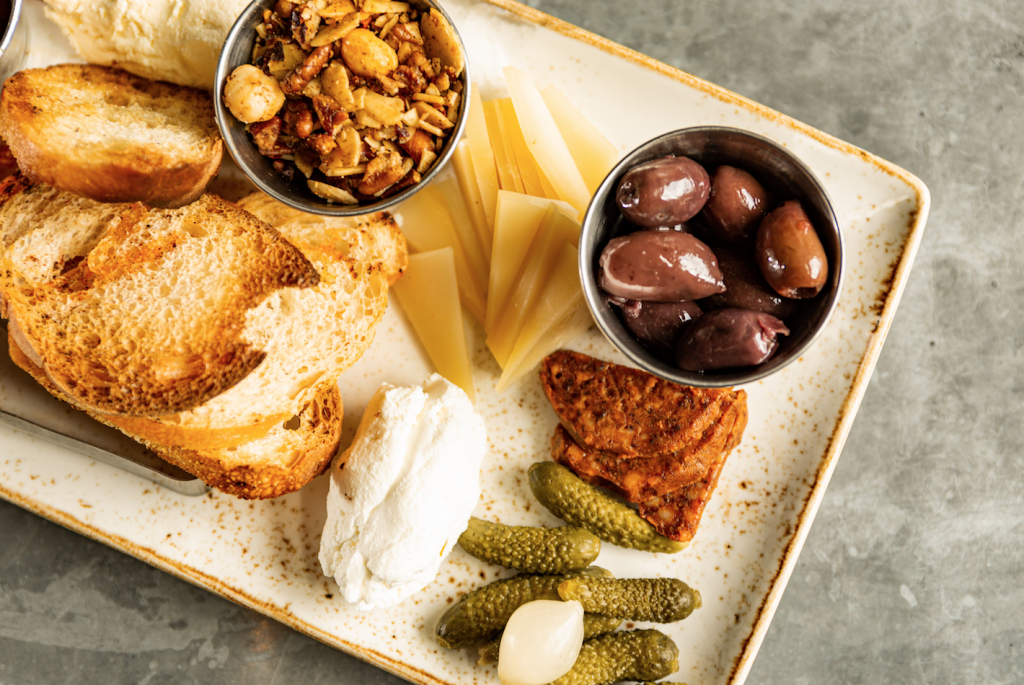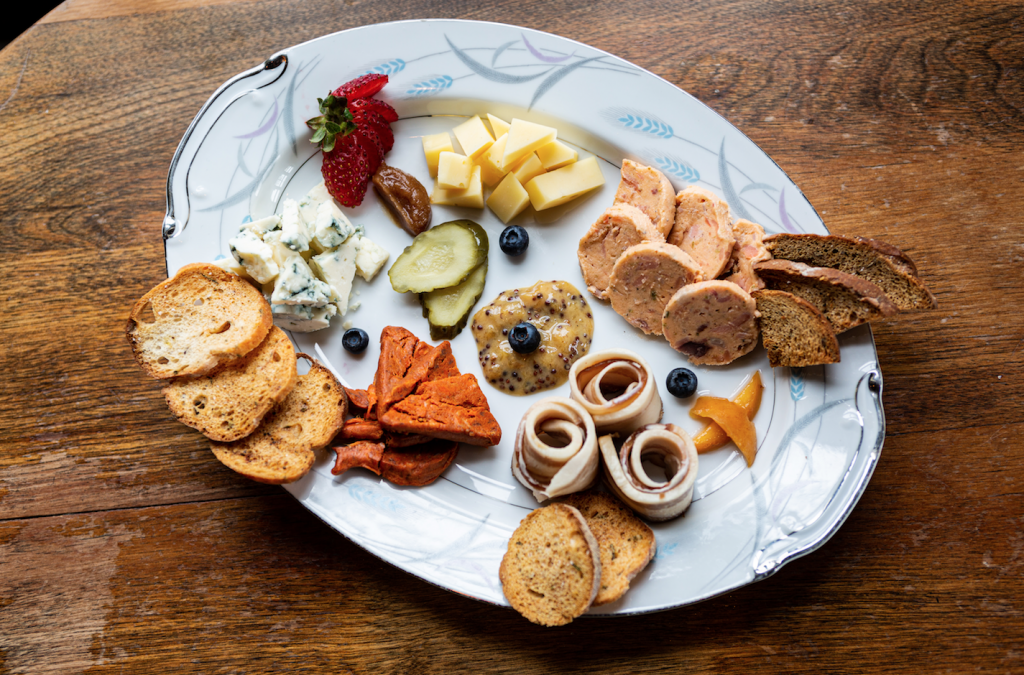Get on board with charcuterie craze with these tips and tricks

Charcuterie has become an Instagram trend this summer and it’s easy to see why—beautiful photos of artfully arranging cured meats with cheeses, fruits, vegetables and crackers have elevated this appetizer into an art form. And it’s accessible to anyone, regardless of your culinary skills or budget.
Peter B. Nunez, chef at The Sycamore, has loved this trend for years. He said that charcuterie is more than a meat and cheese plate—it’s an experience. You want to combine complementary and contrasting flavors, textures and visuals to evoke strong emotions.
“Every bite is a different emotion,” he said. “It gives me the feeling of when I lived overseas, or just eating at home with the kids.” He and his wife often have small plates for dinner with their children, ages 6, 4, and 1.

Nunez’s charcuterie creates an Ohio experience and features Ohio cheeses, meats and produce. In addition to celebrating the local farmland and its products, he said it’s a nod to the Italian, Spanish, Portuguese and Eastern European immigrants who built Ohio.
While the art of charcuterie is relatively new, the fundamental methods of the curing and preserving of foods likely date back to the earliest civilizations. Some speculate that the need to preserve food may have been what led Homo sapiens to cook it in the first place. One theory is that early humans hung raw food over a fire to keep away bugs and animals. In the morning, they discovered a smoked and tender treat. This finding may have played a part in the advancement of society by allowing people to maintain food supplies to get through times of scarcity and leading nomads to settle in clusters as the need to hunt and gather was reduced.
BROUGHT TO YOU BY
Charcuterie’s Insta-worthy elevation began in 15th century France. At the time, charcutiers were not allowed to sell uncooked pork. The term charcuterie—derived from the French words for “flesh” (chair) and “cooked” (cuit)—was used to designate shops that sold cooked pork products. French charcutiers introduced ingenuity into the centuries-old method of preparation and created new forms of meat such as pâté (a ground or pureed mixture of fat, meat and seasonings), rillettes (finely shredded or chopped cooked meat blended with fat), sausage, bacon and head cheese. Charcutiers were esteemed for the delicacies they made and their role in maintaining the food supply for the town.
A few simple steps can help turn your board into a work of art. In addition to using complementary flavors and textures, add a pop with contrasting pairings such as a chewy salami and a smooth pâté, spicy chorizo and sweet fruits, and cold cheese and warmed sausage. Nunez said that contrast is also important. Some of the combinations he recommends include baked prosciutto crumbled over burrata cheese and black truffles with smoked honey. If you’re new to charcuterie, Nunez recommends pairing hard salami with gouda.
Another tip is to add visual interest by varying the way you slice your meats and cheeses. Try slicing salami on the bias, cubing your pepperoni and thinly slicing your prosciutto. Use seasonal flavors to tie your board into your event. For fall, add pumpkin spread, spiced nuts and pears and for winter, include pomegranates and cranberries. Finally, limit your board to one smoked meat—the strong flavor can overwhelm delicate flavors.

Arrange Your Board. Again, there aren’t any rules. Check out Instagram and Pinterest for inspiration. A few tips for arranging with flair include placing contrasting colors and textures side by side, creating depth by using containers and arranging items symmetrically or in a pattern. You can also add visual interest with decorative items.
Select your Drinks. Pairing food and drinks elevates the experience, but offering a variety of foods can make it difficult to select one drink—and you may not want to limit your guests. If you’re serving fattier, saltier foods, serve rye whiskey and champagne. For spicier foods, pour bourbon and Riesling, or a spicy red wine. Scotch pairs well with botanical foods like fennel sausage, and gin pairs well with oily foods like duck.
And there you have it. Your guide to creating not only a delicious, but also a beautiful addition to your table that will take you through a season of gatherings.
BROUGHT TO YOU BY




